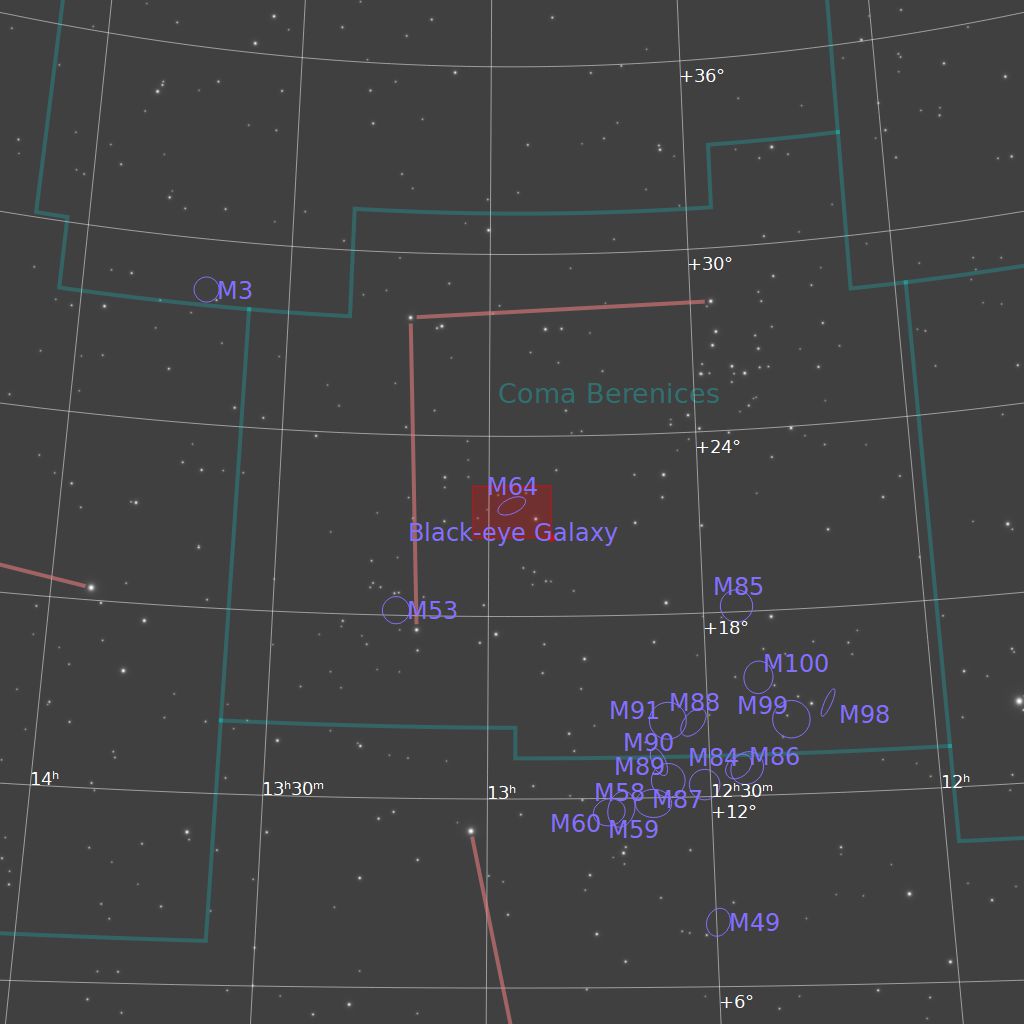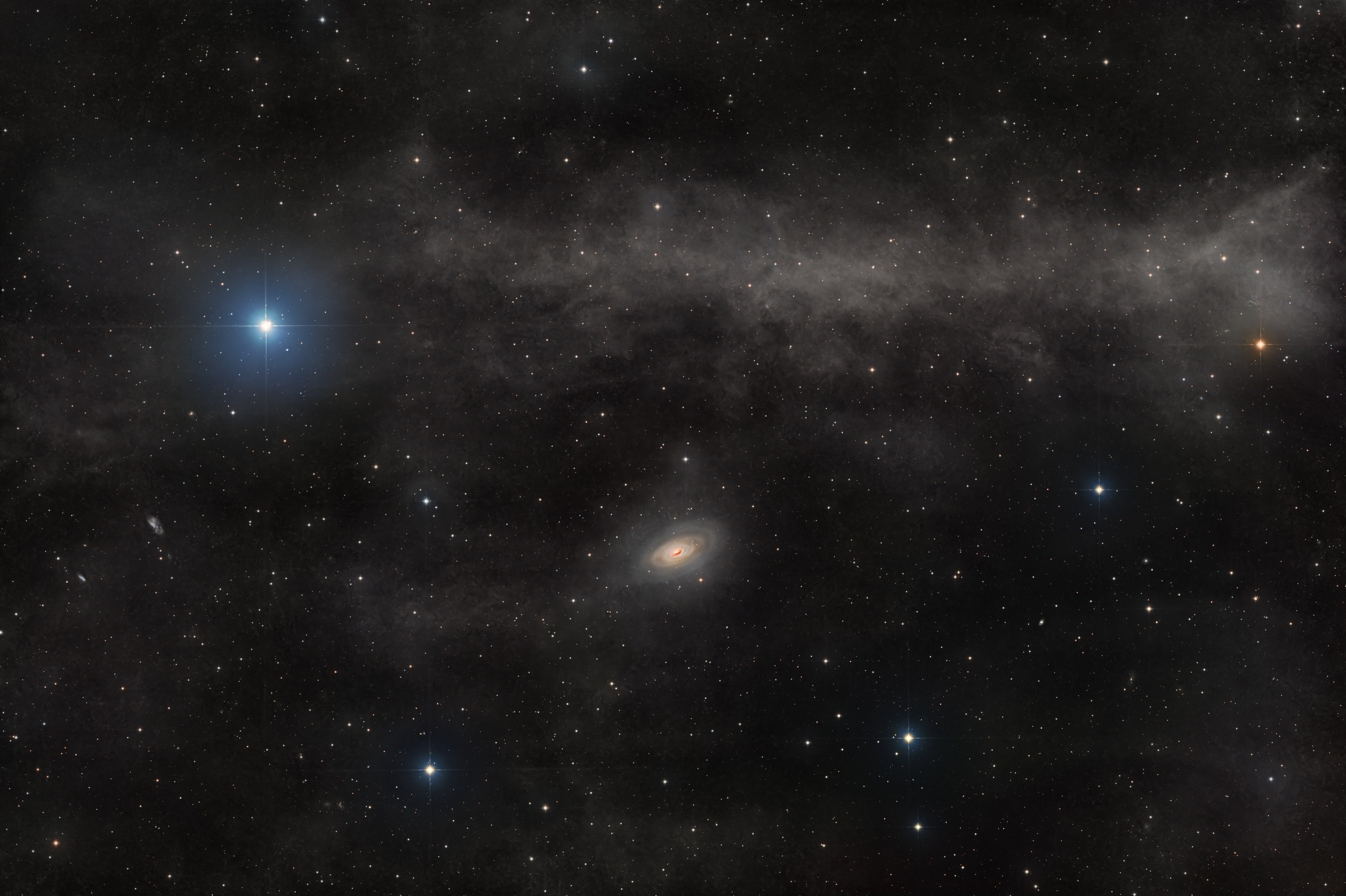

Messier 64 and the Integrated Flux Nebula in Its Vicinity
Messier 64 (M64), commonly referred to as the Black Eye Galaxy, is a well-known spiral galaxy located in the constellation Coma Berenices at a distance of approximately 17 million light-years. It is particularly notable for its distinctive dark dust lane that obscures part of its bright nucleus, giving rise to its popular name. M64 spans roughly 54,000 light-years in diameter and exhibits a complex internal structure, including a counter-rotating disk—a rare dynamical feature where the inner stars rotate in one direction, while the outer gas rotates in the opposite direction. This counter-rotation is believed to be the result of a past merger with a smaller satellite galaxy.
Surrounding the region of M64, particularly in wide-field observations, one can detect faint, wispy filaments of diffuse interstellar material collectively referred to as the Integrated Flux Nebula (IFN). Unlike traditional emission or reflection nebulae, which are primarily illuminated by nearby stars, the IFN consists of high-latitude Galactic cirrus clouds—tenuous concentrations of dust and gas that lie above the plane of the Milky Way and are illuminated by the combined light of the entire Milky Way galaxy. The IFN is primarily detected at optical and far-infrared wavelengths and is associated with far-infrared emission seen by missions such as IRAS and Planck.
In addition to standard calibration and stacking procedures, a rejection channel was included in the final image processing pipeline to visualize transient artifacts. Specifically, a rejection map was generated using median kappa-sigma clipping during the image integration process. This technique identifies and excludes outlier pixel values—typically caused by cosmic rays, satellite trails, or other transient sources—from the final stacked image. By preserving and displaying this rejection data separately, satellite trails that occurred during the individual sub-exposures became visible. These trails represent artificial objects crossing the field of view during the imaging session and serve as a record of anthropogenic interference in deep-sky astrophotography.
-
Category
Spiral Galaxy ((R)SA(rs)ab)
-
Coordinates
RA 12h 56m 43,7s
DEC +21° 40′ 58″ -
Distance
17.3 Million ly
-
Apparent Mag
8.5 mag
-
Equipment
150mm f/2.8 Hypergraph
Skywatcher NEQ6
QHY-294M
-
Exposure
L: 778 x 180 s
R: 184 x 180 s
G: 184 x 180 s
B: 184 x 180 s
Total Integration: 66.5 h -
Publication Date
18.05.2025


